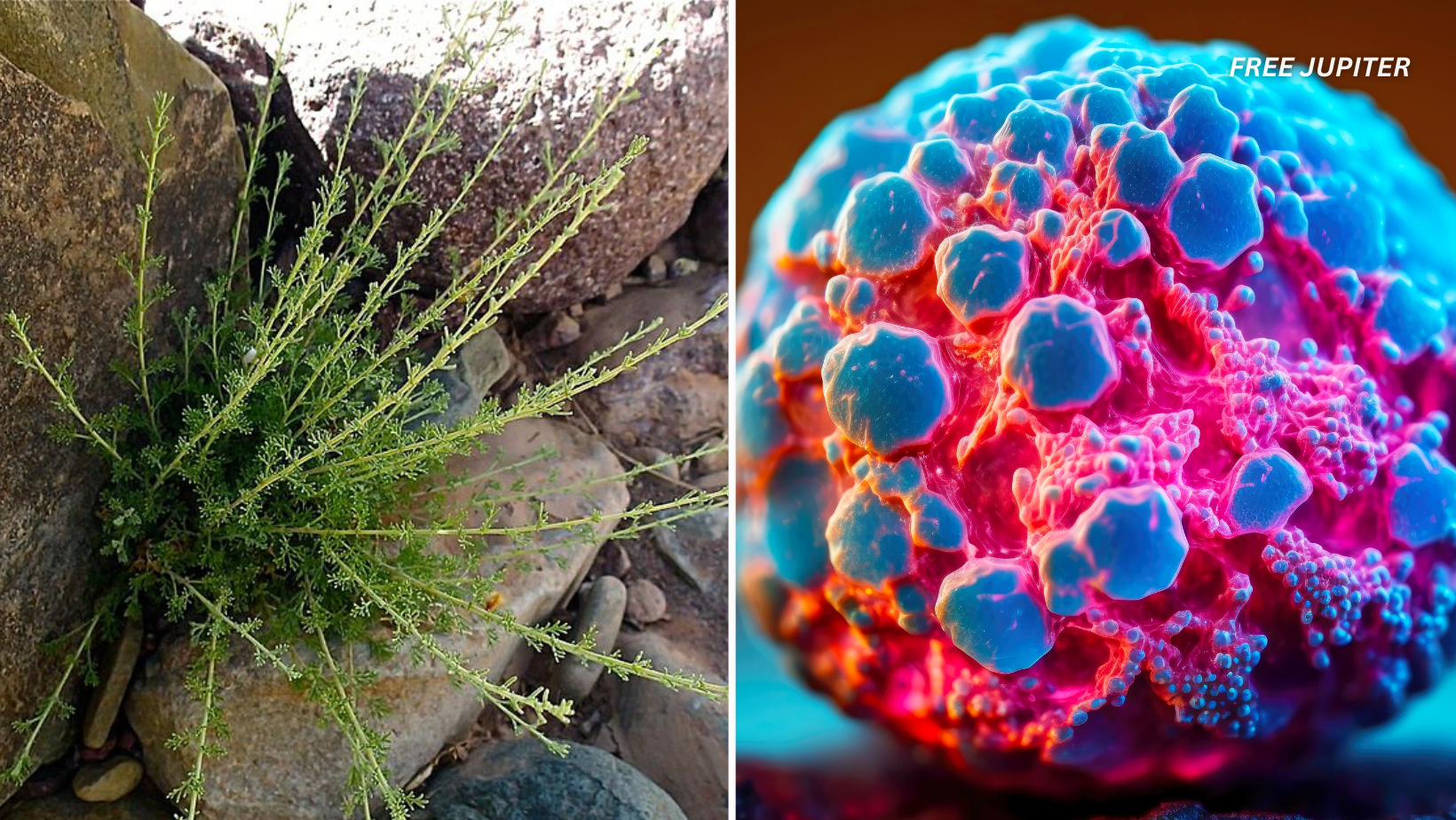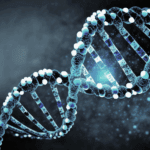In the quiet corners of the world’s driest landscapes, something rather astonishing may be growing. Far from the sterile, gleaming corridors of high-tech laboratories, a dusty shrub with a sweet scent and a long history in folk medicine is catching the attention of cancer researchers—and not without good reason.
In a recent study that’s causing ripples in the scientific world, researchers discovered that Artemisia herba-alba, a wild desert plant sometimes used in traditional teas and remedies, might do something extraordinary: kill off colorectal cancer cells without harming surrounding healthy tissue. That kind of precision is rare in modern medicine—and tantalizingly promising.
Let’s dig into what this really means, and why it could matter in the future of cancer treatment.
A Plant with Ancient Roots—and Modern Promise
Artemisia herba-alba, also known as white wormwood, has been used for centuries in North African and Middle Eastern herbal medicine. Traditionally, it’s been brewed into teas to treat everything from stomach problems to infections. But science is now peeling back the layers to explore its deeper medicinal secrets.
In the University of Sharjah study, scientists carefully prepared extracts from the plant and tested them on several colorectal cancer cell lines in the lab. What they saw was surprising: in many cases, the cancer cells shriveled up and died, while neighboring healthy cells remained untouched—like watching a weed killer that only targets dandelions and skips the daisies.
This kind of selective behavior is a big deal. Most cancer treatments, like chemotherapy, work like a sledgehammer—they hit fast-growing cells indiscriminately, which includes not only cancer but also hair follicles, stomach lining, and bone marrow. That’s why side effects like hair loss, nausea, and fatigue are so common.
In contrast, a treatment that can tell the difference between healthy and cancerous cells? That’s closer to using a scalpel than a hammer.
Read more: Lab Study Shows Dandelion Root Kills Over 90% of Colon Cancer Cells In Just Two Days
How Does It Work? A Simple Breakdown
So how does this sweet-scented desert plant pull off such a sophisticated trick?
According to the researchers, the active compounds in the plant extract likely interfere with key mechanisms that cancer cells use to grow and divide. In particular, they seem to target cells that have lost a vital tumor-suppressing gene called p53—a gene often described as the “guardian of the genome.” Many types of cancer develop when this gene is mutated or missing, allowing cells to grow uncontrollably.
Even in the absence of p53, the plant extract appeared to activate alternative self-destruct pathways inside the cancer cells. This phenomenon, known as apoptosis, is a kind of built-in suicide mechanism that cells can trigger when something goes wrong. In a way, the plant extract gently nudges the cancer cell toward the exit door—and the cancer cell takes it.
Not an Isolated Case: What Other Studies Say
This isn’t the first time that plants in the Artemisia family have shown cancer-fighting potential. In fact, one of its famous relatives—Artemisia annua (or sweet wormwood)—is the source of artemisinin, a compound used worldwide to treat malaria. Interestingly, artemisinin and its derivatives have also been studied for anti-cancer properties, particularly in breast, prostate, and lung cancers.
In 2015, a study published in Life Sciences found that artemisinin derivatives selectively targeted leukemia cells. Another study in Cancer Letters (2017) revealed that combining artemisinin with iron increased its ability to kill cancer cells, thanks to their higher iron uptake compared to normal cells.
So while Artemisia herba-alba is relatively less studied, its botanical relatives have already laid down a compelling foundation. These plants may carry a whole family of bioactive molecules that selectively harm cancer while going easy on the rest of the body.
Colorectal Cancer: A Persistent Threat
To appreciate the full weight of this discovery, it helps to understand the gravity of colorectal cancer.
According to the World Health Organization, colorectal cancer is the third most commonly diagnosed cancer worldwide, with nearly 2 million new cases each year. It’s the second leading cause of cancer deaths. Lifestyle factors such as poor diet, sedentary habits, and genetics all play a role, but what makes this cancer especially tricky is that it often shows few symptoms in its early stages.
By the time many people notice something’s wrong—unexplained weight loss, fatigue, or blood in the stool—the cancer has already advanced. And while surgery, chemotherapy, and radiation are standard treatments, recurrence is not uncommon, and the side effects can be debilitating.
That’s why new therapies—especially those with fewer side effects—are so urgently needed.
Read more: Scientists Turn Coffee Waste Into Bricks—And They’re Twice as Strong as Standard
So, Are We Looking at a Cure?
Not quite yet. As exciting as this research is, it’s important to temper expectations. So far, the effects of Artemisia herba-alba have only been observed in vitro—that is, in petri dishes under controlled lab conditions. That doesn’t always translate into the same results inside the human body, where things are a lot messier.
Before this extract could become part of cancer treatment, it would need to go through:
1. Animal Studies: Testing the Waters in Living Systems
Once something shows promise in a petri dish, the next stop is usually animal testing. Researchers use animal models—often mice or rats—to observe how the compound behaves inside a living body. These studies aren’t just about seeing whether it continues to kill cancer cells; they’re crucial for answering broader safety questions.
- Is the extract toxic at certain doses?
- How is it absorbed, distributed, and broken down in the body?
- Does it affect major organs like the liver, kidneys, or heart?
- What’s the highest dose that can be given without causing harm?
These animal studies help researchers figure out a safe starting point for human trials. They also provide early warnings about any dangerous side effects or long-term consequences that might not have shown up in the lab dish.
2. Human Clinical Trials: Testing in Real People
If animal testing is successful and the compound appears safe, the next phase involves human beings—but not all at once. Clinical trials are carefully structured in phases to minimize risk while gathering increasingly detailed information.
- Phase 1 Trials: These involve a small group of healthy volunteers or patients. The goal here is to assess basic safety, identify side effects, and determine how the human body processes the substance (this includes how quickly it’s absorbed and how long it stays in the system).
- Phase 2 Trials: Now that the compound has cleared the first safety hurdle, researchers test it on a larger group of people—typically patients who have the condition being targeted. This phase looks at both safety and effectiveness. Is it working? How well is it working compared to existing treatments?
- Phase 3 Trials: These are much larger studies involving hundreds or even thousands of patients across multiple locations. This phase provides robust data on the treatment’s real-world effectiveness, safety over time, potential drug interactions, and how it compares to standard therapies already in use.
Only if a treatment clears all three phases of trials will it be considered for widespread use. And even then, the work isn’t over.
3. Regulatory Review: Crossing the Legal Finish Line
Before any new treatment is allowed to reach doctors’ offices, hospitals, or pharmacies, it must be carefully reviewed and approved by national health regulatory bodies. In the U.S., that means the Food and Drug Administration (FDA). In Europe, it’s the European Medicines Agency (EMA). Other countries have their own equivalents.
During this process, regulators scrutinize every detail of the research—from lab data and clinical trial results to the methods used to manufacture the compound. They want to ensure:
- The treatment consistently meets quality and purity standards,
- The claimed benefits outweigh the risks,
- And that all potential side effects are clearly communicated to doctors and patients.
Only once a treatment passes this review can it be legally marketed and prescribed. And even then, regulatory agencies continue to monitor it for safety through post-marketing surveillance, often called Phase 4 studies.
That could take years. But even at this early stage, the findings are a strong reminder of why nature remains one of the greatest untapped pharmacies on Earth.
Read more: New Investigation Reveals Deadly Side Effect Linked to Popular Weight-Loss Drugs
Final Thoughts: A Sweet Glimmer of Hope
The idea that a natural plant used in traditional medicine for centuries might also hold the power to kill modern cancer cells is equal parts poetic and scientifically thrilling. It bridges the ancient with the modern, blending traditional healing wisdom with cutting-edge cancer research.
If future studies confirm the safety and efficacy of Artemisia herba-alba extracts, we may one day see it as part of a larger toolbox—supporting conventional therapies with something gentler, more selective, and rooted in nature.
Until then, this desert plant reminds us that sometimes, life-saving secrets grow in the most unassuming places.










